Installation rules for CCTV cameras
From the very early stages of the emergence of civilizations, one of the most important tasks of man is to create a safe environment for life. There is an expression “my home is my fortress”. Indeed, the person feels most protected precisely in the walls of his apartment. To improve the security of your home, you can install a video camera to monitor the apartment, house or territory next to the house. And how to do it correctly will be narrated in the material.

Content
Camcorder Installation Locations
Installing the camcorder implies that the owner has the opportunity to watch the video online or view it later. Before you start installing video cameras, you should consider where they will be located, how long they will be needed, and what they will shoot.
In a private household
When placing the cameras in a private house, you should take care that they remove not only what is happening inside the house, but also house territory: the house and part of the street behind the house and in front of it. In this case, the owner will be able to follow who approached / approached his house while he was away. You can also have an idea of what is happening in the backyard, where there are far fewer people who could startle an attacker. Cameras that are installed on the wall of the house and take off the courtyard will be able to show whether someone else walked on it. The situation is similar when installing cameras in the country.
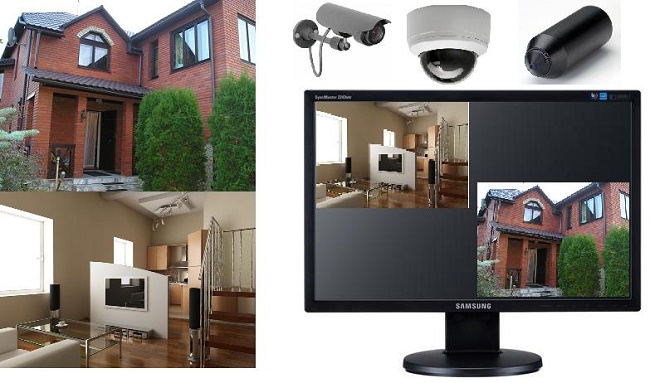
In the apartment
The owners of private apartments most often install cameras to be able to monitor the household, and to be able to see what happened in the apartment if theft occurred.Obviously, the cameras in the apartment should be located in each living room and where there are valuable things. It will not be superfluous to have a camera that will remove the entrance to the apartment.
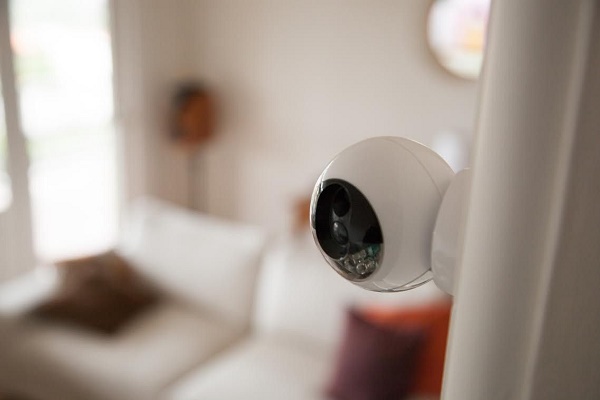
At the entrance
Recently, there have been increasing offers from various security companies and even the police to install cameras in the stairwell, in the elevator and even in the street near the house. This option will help to protect the object, as usually along with the installation of video surveillance, security services are offered. At a minimum, operators who track such videos will be able to call the police or security officers into place in the event of any danger. In addition, this video allows control the yard. This is especially useful if it is a closed territory, and only residents of the house or their neighbors can stay in it.
Main camera locations in an apartment building:
- the entrance to the staircase (if there are several, then the camera should be seen by everyone);
- platforms on all floors near the elevators;
- a vestibule in front of the apartment, if there is one;
- front door, if there is one;
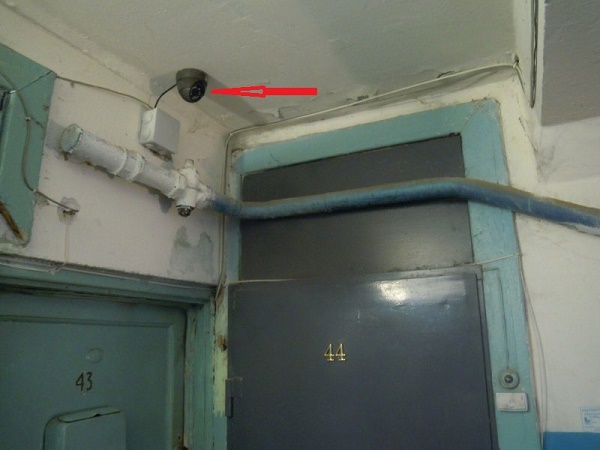
Accommodation in the courtyard:
- playground;
- car parking;
- the area in which cars move in the yard;
- gate and pedestrian area;
- gate for cars.
In the office
Installing a camera in an office usually has several objectives: ensuring security, as well as the ability to monitor events occurring in it during the absence of a boss. In other words, the management can monitor their subordinates, and in case of violation of the regulations, give operational communication.
Installing CCTV cameras in the office is advisable. in all officesas well as in the corridors and at all entrances or exits. If the office has a storage room for the office or any goods / goods, then the camera must be there. In the presence of ticket office and warehouse the cameras must record these places.

Is it legal to install camcorders
Sometimes people who are going to install video surveillance have a reasonable question: can it be installed on the landing or in the office (other workplaces).It is quite obvious that installing such a house or in your own yard does not raise such questions, as the owner here is the sole owner and sets the rules himself, but how legitimate it is to install video surveillance equipment in places where strangers will be removed is an interesting question.
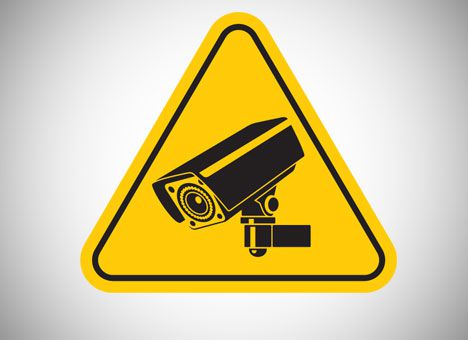
At work
Looking ahead, it should be noted that a specific answer to the question of whether or not to install video surveillance in the workplace does not exist. There are a number of different "but." It should be understood that hidden video surveillance is prohibited in principle: such a prohibition is provided by the law “On the inviolability of personal life”. It states that shooting without notifying employees or customers violates the inviolability of their personal life. A call from home, going to lunch, to the toilet, to a smoke break does not apply to work. So, you can not shoot without notice at such moments. For the same reason, video recording cannot be carried out in the back rooms - in the smoking room, changing room, or toilet.
The placement of surveillance cameras is a reasonable measure that allowed by employer if necessary. In particular, Article 74 of the Labor Code of the Russian Federation says that video cameras can be installed in the workplace in order to preserve inventory values. At the same time, the video recording of the work process does not prohibit employees to communicate, make phone calls, and engage in outside affairs, provided that the work standard is being fulfilled by this employee.
Based on the foregoing, the requirements that the employer is obliged to comply with for the installation of video surveillance are as follows.
- If video surveillance is already installed, and a new employee is hired, he should sign a record keeping agreement and give permission for the processing of personal data. Such permission is not a regulated document and can be drawn up in any form, but it is worth noting that when filling out a job application form, almost 100% of such consent is signed.
- If video surveillance is only installed at work, then employees must be notified for 60 calendar days before this event. In this case, an additional agreement is made, and all employees are required to sign it.Refusal of this under Article 77 of the Labor Code of the Russian Federation allows terminating an agreement with such an employee. In addition, if they have not signed the consent to the processing of personal data, it must be signed.
At the entrance
Install a video camera in the entrance can be subject to several conditions.
- The camera can only be placed above your own door.
- The device should not remove the interior of other people's apartments with the doors open.
- In this case it is not necessary to hang a label about video filming.
- The camera must be visible (that is, not disguised as other objects).
- It should not be mechanisms for night shooting.
Important! If these conditions are met, then the installation of the camera is valid and allowed. Remove it without the permission of the court can not be. If the camera was dismantled without the permission of the owner and a court order, then there is every reason to sue those who did.
Moreover, if a piece of an apartment is visible in the camera’s field of view with the doors open, but it is obvious that it was captured by chance, since the camera is directed to another place, the court may not consider this a violation.
Equipment for video camera installation
In addition to the camera itself, a video surveillance system includes elements such as a device for processing and storing a signal, peripheral equipment for mounting (a camera mount and connecting wires), an image display device.
Mounts for camcorder
Any camera is attached to the surface with a special bracket. In general, they can be divided into two categories: wall and ceiling. By the method of mounting the camera hold:
- on bolts or screws;
- on the suction cup (stand up to 2 kg, not safe and used as a temporary measure).

Ceiling and wall brackets can be divided into 4 types:
- built-in;
- fixed;
- rotary.

Fixed brackets imply that the camera has a clear direction, and to change it will have to change the position of the holder.
Swivel brackets can be divided into several types: with or without a knee, and also with a turntable. More simple swivel arms are models that are fixed to the wall, but they have a platform with the possibility of rotation around its axis and a small angle of inclination.The second type of swivel brackets is the models in which the mounting platform is fixed, and the rest can be shifted to the sides or vertically. The platform for the camera itself in this case can also change position. They are convenient because there are much more options for camera pointing.

On a note! There are also brackets with a swivel mechanism, whose work can be controlled from the control panel.
DVR
Under the device processing and storage means the DVR or video capture card. The DVR is a standalone device with a hard disk that receives, processes and records the signal, and also, if necessary, displays it on a monitor or TV. Such devices are supported by TCP / IP protocols.
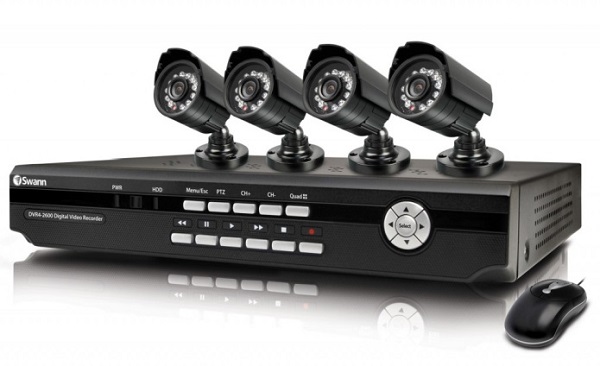
Video capture card It can not work separately, it always works together with a PC and uses its power to work with the signal. Despite the fact that the characteristics of these two devices as a whole are approximately the same, DVRs are usually much more expensive.
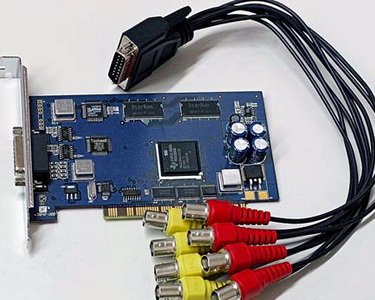
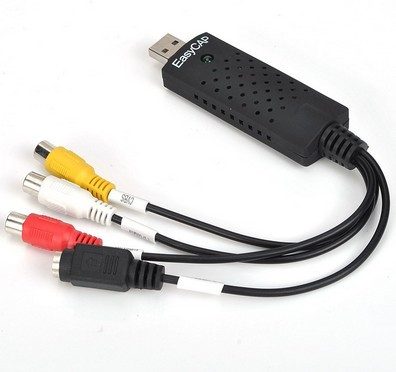
Wires for connection
Wires are the main connecting element between different devices of the video surveillance system.To connect devices requires several types of wires that can not replace each other.
- Power cable. Wires to power the camcorder. The maximum distance is 110 meters, power is supplied from 12 volts. Copper multicore cable with a diameter of 0.5 mm is perfect. If the length is more than 110 meters, you should use a cable with a diameter of 0.75 mm.

- Twisted pair serves to transmit video over long distances. Transmission of video over twisted pair is subject to the use of an active transmitter.
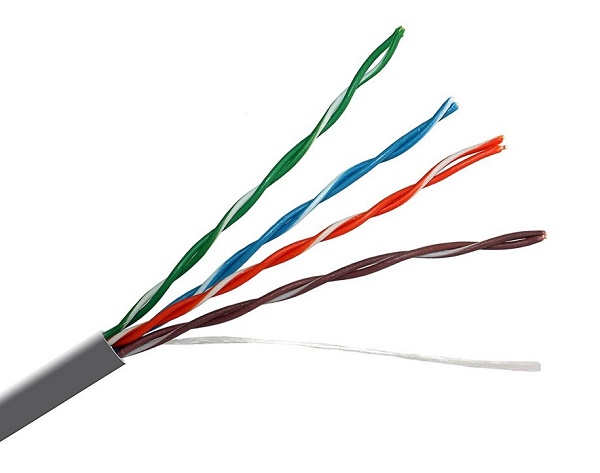
- Coaxial cable It is used to transmit the video signal from the camera to the DVR, the thickness should start from 0.5 mm, but can reach 8 mm, although there is not much point in overpaying for such a wire. It has a central copper conductor.

- Combined cable It combines power and data transmission, it is convenient for use in an apartment, since it is not necessary to pull several wires.
Important! A significant difference in the connection of analog and digital cameras is used in the wires. For analog models, coaxial cable is better suited, for digital - twisted pair.
Image display device
An effective video surveillance system implies not just shooting to be able to later find the incident on the video, but to have a person sit in front of the monitor and monitor what is happening in order to be able to intervene quickly.
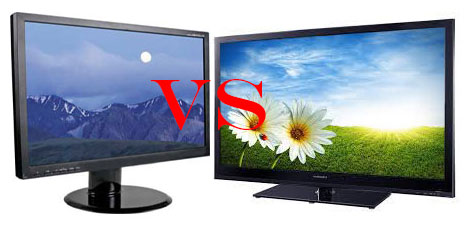
Monitors, televisions, laptops, tablets and smartphones can be used as display devices.
Tablet and smartphone - this is a way to remotely view the video. A laptop is used in the same way, but it can also be used to output video from cameras through a video capture card. This method is advisable if the observation is carried out in a limited period of time. That is, the operator turns on the system and connects it to the laptop, and after the end simply leaves, turning off the entire system.
For round-the-clock viewing it is much more convenient to display the image through the DVR. on a monitor or tv. Due to the fact that the price tag of this technology is now approximately the same, it can be difficult to choose. The final decision can be made on the basis of several work options:
- constant viewing of images from cameras.
- monitor or TV will be used periodically.
In the first case, it is better to stop on the monitor - they are more reliable from the point of view of permanent work, they are not afraid of a static picture, the detailing is better due to smaller pixels (that is, you can sit next to the monitor). An image can be imprinted on a TV with a constant picture, they are not intended for watching videos from a short distance, especially if you do it for a long time.. Well, the last minus - the TV is not designed for round-the-clock work, and this is exactly what a video surveillance system means.
If the video surveillance system will turn on periodically, there may be various options. For example, the operator watches TV and periodically you need to look at the video from the cameras, for this, switching between the signal source is carried out from the console, you do not even need to get up. The situation is similar if you use a monitor from a PC for which you are constantly working to view the recordings from surveillance cameras.
Tips for mounting the camcorder
When installing the camcorder should follow several rules. They will extend the life of devices and organize effective monitoring, and not just create the appearance of its presence.
- Install the camera only after it has been compiled. layout plan, and the cameras themselves are tested for performance.
- When installing you should check where is the camera looking. If the mount for the camera is not swiveling, then it is very important to immediately set the right direction, so that you do not twist the device.
- When installing devices on a pole that is located on the street or in any other place outdoors, care must be taken power supply protection.
- If possible, the camera should be installed as high as possible or combined with hidden devices (if the object is top-secret, and this is regulated by law).
- When installing video surveillance cameras, you should take care of protection from precipitation - This will significantly extend its service life. Also, the camera should not be aimed at the sun, as this leads to its rapid failure. It is necessary to provide for the movement of the light and install the camera so that there is no direct visibility with the sun's rays.
- At installation it is necessary to take care of lighting uniformityIt is not recommended to install the camera in a dark place, provided that it will shoot brightly lit areas.
- Camera for shooting at night should have LEDs or lights, and you can also worry that the site itself was lit during the shooting.
- When installing the device should not forget provide access to it, to be able to clean the dust or slightly change the viewing angle, if the bracket has such a function.
Installation and connection of equipment
It is easy enough to install and connect video cameras with your own hands, provided that you have at least minimal knowledge in the field of such works. Before starting installation of a video camera and related equipment, a plan should be drawn up on which all cameras on the site will be marked.
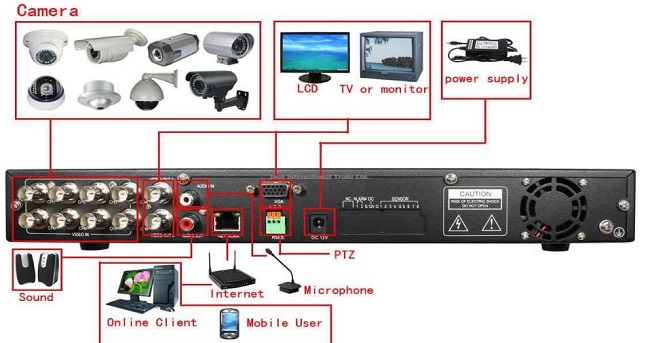
Important! When choosing an installation location and cabling, you should consider the presence of an already existing electrical cable, since it can distort the signal. The minimum distance between the wires of the camera and the electrical network should be 1 meter. Otherwise, the wires will have to be shielded using a metal box.
Next stage - viewing angle determination. A large angle will provide better visibility, but the worst quality of parts, a small angle has exactly the opposite properties.The final stage of preparation of the connection scheme is to determine the place for the registrar and the monitor, behind which there will be a guard.
Installation of the surveillance camera is carried out according to the following algorithm.
- The camera is mounted after preparing the desired viewing angle and testing the device. Most often bolts and screws are used for fastening.
- From all cameras wires are laid to the recorder. Wires can be hidden in the wall or sewn up with special protective boxes. Connecting the camera to the wire depends on the type of camera. Conventional analog cameras are most often used to connect a tulip cord (RCA), which is switched with a coaxial cable, and it is already connected to the recorder.
- The digital recorder is connected to the power supply; ideally, it should be connected via an uninterruptible power supply.
- The next stage is connection of the registrar to a TV, monitor or computer. As a rule, a VGA cable is used, less often an HDMI cable.
- An IP camera can be wired or wireless. In the first case, it can be immediately connected to a laptop, while it will act as a recorder and send video to the server if long-term video storage is required or the ability to view it remotely.Obviously, for permanent work, the laptop must be constantly on. In most cases, such a camera is connected directly via a USB connector. For the same purpose can serve as a computer.
- To save money, users can instead of a digital recorder use video capture card. It comes in the form of a separate unit (connected via USB) or built into the motherboard. From the board itself, depending on the number of video cameras for which it is designed, video and audio outputs go. That is, if the board is four-channel (for four cameras), then it will have 8 outputs - two for each (picture and sound). Connecting the camera using tulips.
- After installing the entire system and connecting its elements together, it is necessary to turn on and check the output of the image on the tracking monitor, as well as the correct viewing angles and visibility in low light.
Sometimes users have a question, is it possible several video cameras connected by one wire. This can be done, but only for IP-cameras with twisted pair, which will have to share. Initially, there are 8 lines in the wire (differing in colors), each color is connected in a specific order.In order to share, you will need to take 1,2,3,6 for one camera and 4,5,7,8 for another.
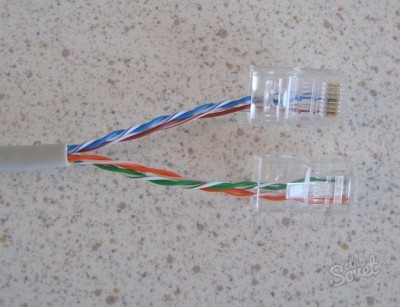
Wireless connection
The advantage of wireless connectivity is substantial savings on wires and installation work. All that is required for installation is a camera, a router, a laptop (smartphone, tablet), a special software.
The principle of operation of the wireless camera is very simple - it connects via Wi-Fi to the router, from where the signal enters the laptop, is recorded on the hard disk or sent to the server. With the help of special software, the user can connect to the camera anywhere in the world and view it in real time or on video recording. In addition, using special programs, you can control the camera.

/rating_off.png)











